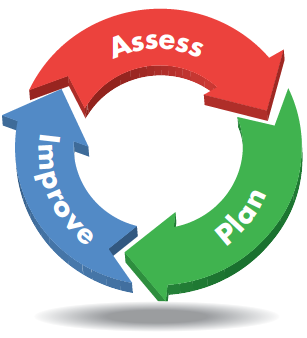Embedding Continuous Quality Improvement Throughout Organizations
This blog post was originally posted on AEA365 and was written with Tiffany Berry, a research associate professor at Claremont Graduate University. Today we are going to discuss the importance of embedding quality throughout an organization by discussing our work in promoting continuous quality improvement (CQI) in afterschool programs.CQI systems involve iterative and ongoing cycles of goal setting about offering quality programming, using effective training practices to support staff learning and development, frequent program monitoring including site observations and follow-up coaching for staff, and analyzing data to identify strengths and address weaknesses in program implementation. While CQI within an organization is challenging, we have begun to engage staff in conversations about CQI. Hot Tip: One strategy we used involved translating the California Department of Education’s “Quality Standards for Expanded Learning Programs” into behavioral language for staff. Using examples from external observations we conducted at the organization, we created four vignettes that described a staff member who displayed both high and low quality across selected quality standards. Site managers then responded to a series of questions about the vignettes, including:
Hot Tip: One strategy we used involved translating the California Department of Education’s “Quality Standards for Expanded Learning Programs” into behavioral language for staff. Using examples from external observations we conducted at the organization, we created four vignettes that described a staff member who displayed both high and low quality across selected quality standards. Site managers then responded to a series of questions about the vignettes, including:
- Did the vignette describe high-quality or low-quality practice?
- What is the evidence for your rating of high or low quality?
- What specific recommendations would you give to the staff member to improve on areas of identified as low quality?
At the end of the activity, site managers mentioned the vignettes resonated strongly with their observations of their staffs’ practices and discussed how they could begin implementing regular, informal observations and discussions with their staff to improve the quality of programming at their sites.Hot Tip: Another strategy involved embedding internal observations into routine practices for staff. Over the years, we collaborated with the director of program quality to create a reduced version of our validated observation protocol, trained him on how to conduct observations, and worked with him to calibrate his observations with the external observation team. Results were summarized, shared across the organization, and were used to drive professional development offerings. Now, more managerial staff will be incorporated into the internal observation team and the evaluation process will continue and deepen throughout the organization. While this process generates action within the organization for CQI, it also allows for more observational data to be collected without increasing the number (and cost!) of external evaluations.Rad Resource: Tiffany Berry and colleagues wrote an article detailing these process on “Aligning professional development to Continuous Quality Improvement: A case Study of Los Angeles Unified School District’s Beyond the Bell Branch.” Check it out for more information!
